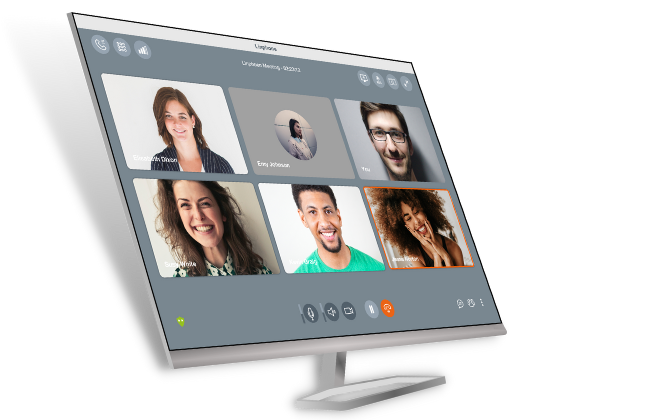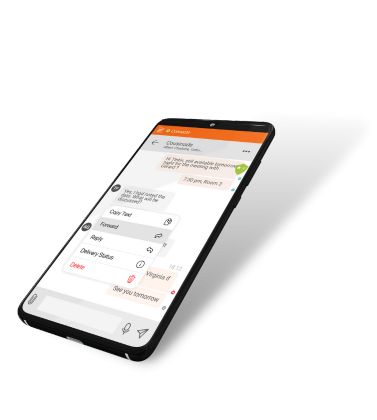The Linphone team is happy to announce the official release of its group video calling solution! It is now possible to schedule a conference call with several participants or to place an ad hoc group call.
This major new feature is the result of intensive R&D work conducted on the Linphone apps, the Liblinphone library, and our Flexisip server suite. Many new functions have been developed in Liblinphone, and new conference calling and meeting scheduling displays have been designed in version 5.0 of Linphone for the iOS, Android, and desktop platforms.
On the server side, the Flexisip conference server has been enhanced with a conference establishment mechanism that is compatible with the RFC 4579 (SIP Call Control – Conferencing for User Agents) and a modern Selective Forwarding Unit (SFU) algorithm for routing media streams.
Main features of Linphone’s conferencing solution:

- Group calling and scheduled meetings
- Three display modes: active speaker, mosaic, and audio only
- Point-to-point encryption with SRTP (with end-to-end encryption coming soon!)
- Always reachable and notified in real time thanks to push notifications
- Interoperability with standard SIP-based video phones
A modern Selective Forwarding Unit
Existing audio/video conferencing solutions of the ‘multipoint control unit’ or ‘media-mixing unit’ types have proved to be costly in terms of resources when it comes to video processing due to the algorithmic complexity of video codecs. This constraint led to the emergence of new solutions that transmit a useful subset of the streams received from all the participants to each participant. For example, only the video of the participant who is actively speaking is dispatched to each participant, together with some very low-resolution video streams of the other participants.
This technology is referred to as a ‘Selective Forwarding Unit’ (SFU) or ‘Selective Forwarding Middlebox’ (SFM). These solutions open the path to conference sessions managed by a server that does not decode the media content. The main benefit of a Selective Forwarding Unit is that it is capable of receiving multiple media streams and then deciding which of these media streams should be sent to each participant. This makes it possible to increase the number of participants in a group call.
Linphone is likely to be the first open-source SIP-based conferencing solution powered by a modern SFU server. As the server solution that we were using for instant messaging features was compatible with open standards for managing group chatrooms and their participants, the idea was to enhance this component with media capabilities. Therefore, the Linphone team developed an SFU algorithm within mediastreamer2 (our media processing library).
This technology paves the way for a major innovation that we are currently working on: end-to-end encryption for real-time audio and video conferences. Stay tuned!
How can this feature be used or integrated into existing software?
- For Linphone users, our sip.linphone.org SIP service allows you to benefit from these video conferencing features for free! This service is powered by our Flexisip proxy and conference servers.
- For companies that wish to build their own video conferencing app, we can rebrand the Linphone app for you and deploy the Flexisip server suite on premises or as a cloud service.
- For app developers, it is also possible to use our Liblinphone library to add conferencing features to an existing app (or to build your own user interface from scratch).
It is no longer necessary to integrate different stacks to build a nice communication app: Linphone provides a complete client/server solution, which includes voice/video over IP calling, instant messaging, group messaging, and now group calls and meetings!
Contact us for more information.



